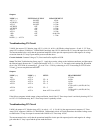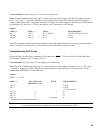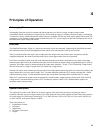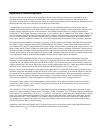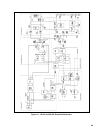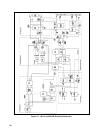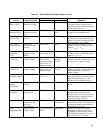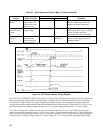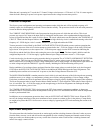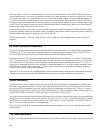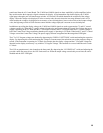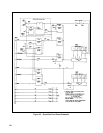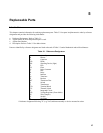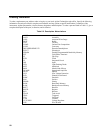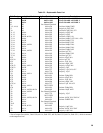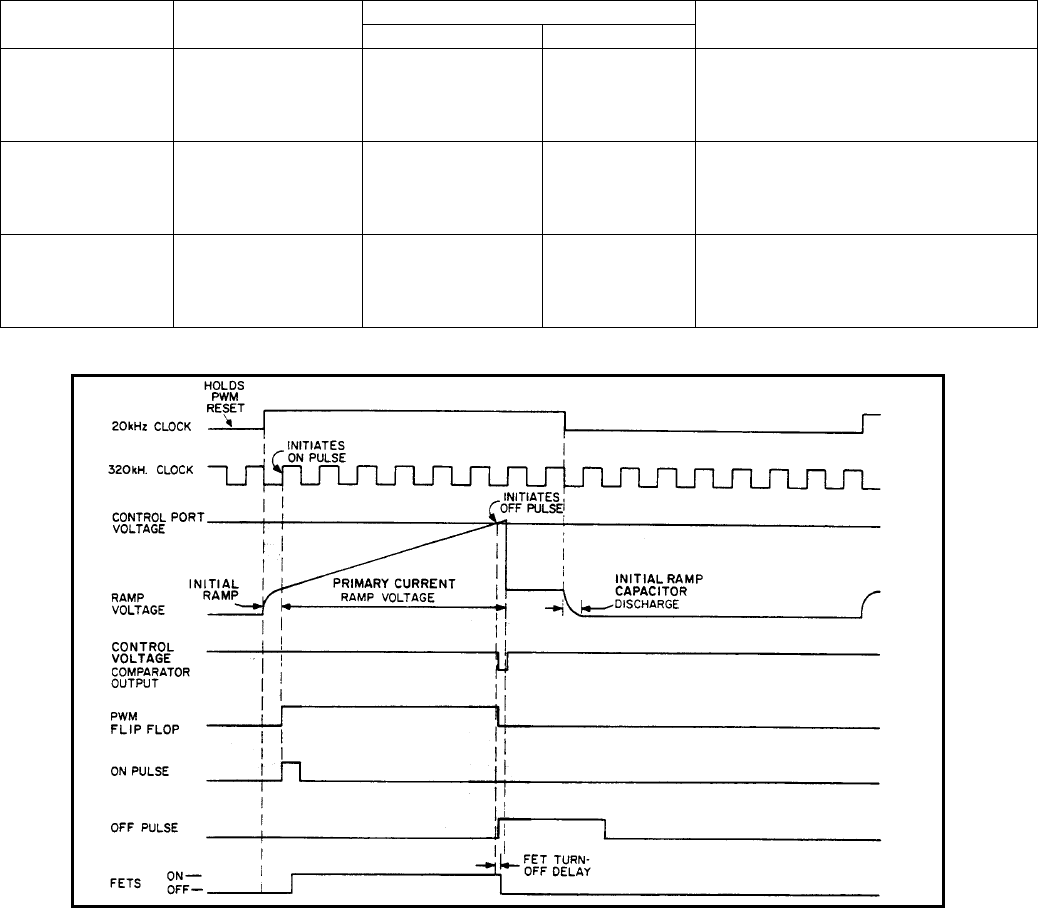
52
Table 4-1. Quick Reference Guide to Major Circuits (continued)
Dependent Circuits
Circuit Major Function Input from Output to Operation
Drop out Detector
(DOD)
Shuts down output
power when line
drops out for more
than one cycle.
Bias Transformer PWM; DP If no ac pulse is detected after 20ms,
the circuit inhibits the PWM and
triggers the Down Programmer.
Over Voltage
Protection (OVP)
Circuit
Limits maximum
output voltage.
+ Out Sense DP; PWM Senses Output Voltage and compares
with a preset limit set by its reference
circuit. It triggers the Down
Programmer in extreme situations.
A9 Output board
(6015A)
Protects output
capacitors and
power mesh from
reverse voltage.
Power Mesh Output
terminals
Diodes provide protection against
reverse voltage applied across the
output terminals.
Figure 4-2. FET Control Signals Timing Diagram
The CONSTANT CURRENT CIRCUIT also produces a control voltage. The outerloop current sense (OCS) is taken across
the current monitoring resistor and the combined signal is amplified by the CC Monitor amplifier to give the outerloop
Current-Sense Voltage, I-MON. This signal is then diverted along two paths: one terminating at the barrier strip while
along the other path the signal combines with the differentiated output of the Innerloop Voltage Sense (IVS). The CC error
amplifier compares this combined output with the user-set CC Program Voltage to produce the CC Control Voltage.
The Control Voltage used to regulate the unit may be derived from either the CV or CC circuit. These circuits are con-
nected via a wired-OR connection to the CV or CC circuit. If the CV Control Voltage exceeds the CC Control Voltage then
diode A2CR24 is reversed biased but diode A2CR11 is forward biased and the CC Circuit provides the controlling signal.
Similarly when CC Control Voltage exceeds CV Control Voltage, the CV circuit provides the regulating control voltage.



